Billie’s Bounce, one of the most iconic jazz standards from the bebop era, was written by Charlie Parker in 1945 and is one of his most famous songs. The original recording featured Charlie Parker (alt sax), Miles Davis (trumpet), Dizzy Gillespie (piano !), Curley Russell (bass), and Max Roach (drums).
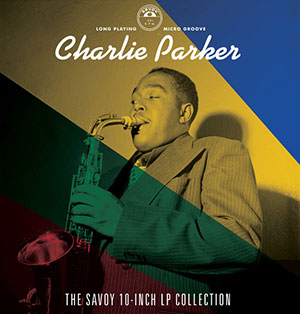
The story goes that Billie’s Bounce is named after Billie Holiday, but the song’s title really alludes to Billie Miller, who worked as a secretary for Charlie Parker’s agent, Billy Shaw.
In this lesson, you will learn the melody of Billie’s Bounce in two octaves. Practicing the melody will help you get a better sense of jazz phrasing and a feel for syncopation.
The melody is characterized by syncopated rhythms, the major blues scale, chromatic approach notes, and enclosures. You will learn more about them in the melodic analysis later in this lesson.
The harmonic form of Billie’s Bounce is a bebop blues in F.
Recommended listening:
- Charlie Parker – single (1945)
- Chet Baker – Out of Nowhere Volume 2 (1954)
- Jimmy Smith (with Kenny Burrell) – Jimmy Smith at the Organ (1957)
- Wes Montgomery – Fingerpickin’ (1958)
- George Benson – Giblet Gravy (1968)
- Jim Hall – Live in Tokyo (1976)
- Jimmy Raney – The Master (1983)
- Oscar Peterson (with Herb Ellis) – Encore at the Blue Note (1990)
- Tal Farlow & Philippe Petit – Standards Recital (1991)
Billie’s Bounce – Video & Guitar Tabs
Backing Track
Listen & Play-Along
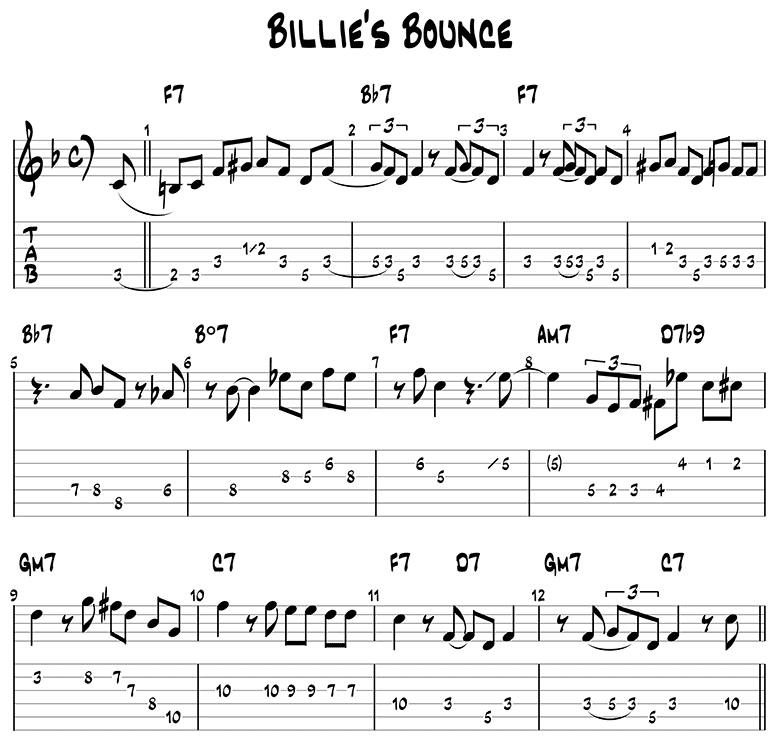
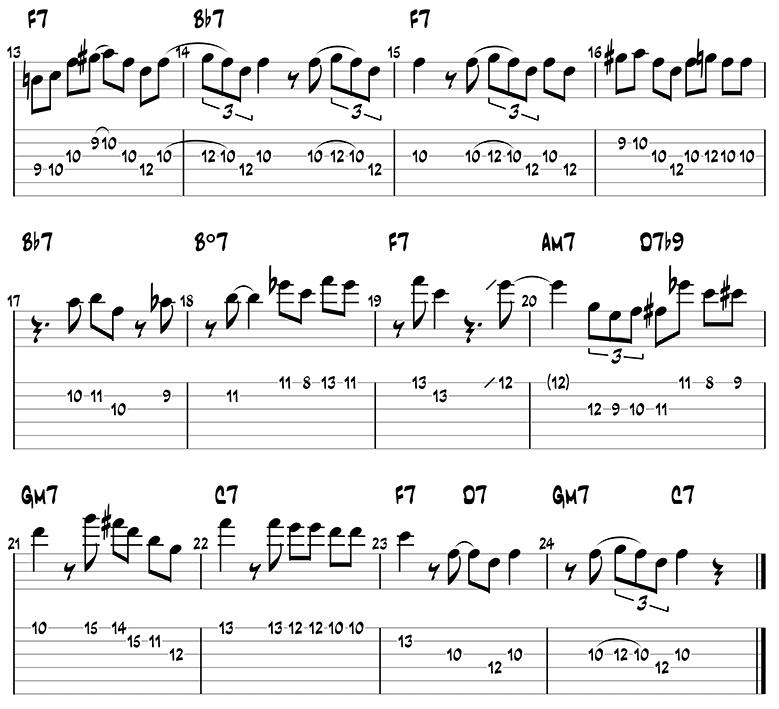
Billie’s Bounce – Melodic Analysis
Here is an analysis of the head of Billie’s Bounce as well as some jazz patterns that are lifted from the melody.

Jazz Guitar Pattern 1 – Chromatic Turn (bar 1)
A chromatic turn is when you play a note and then approach that same note with its chromatic lower neighbor.
This ornamentation adds tension and release to a phrase.
Here is an example of this pattern over a ii V I in F major.
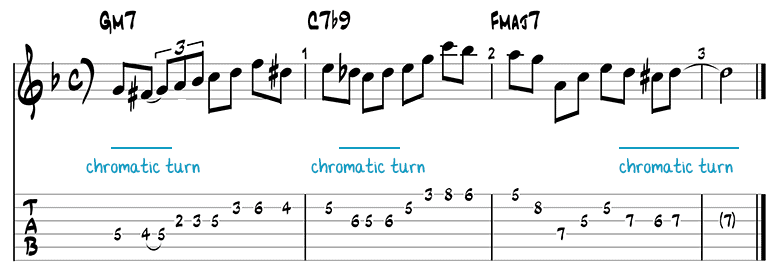
The F Major Blues Scale (Bar 1 to 4) and F Minor Blues Scale (bar 5 to 7)
The first four bars of Billie’s Bounce use the F major blues scale.
On the Bb7 (bars 5 to 7), the minor blues scale is used.
This is something you can use in your solos as well.
In the following example, I play the F major blues scale throughout, except on the Bb7 (bars 5 to 7), where I use the F minor blues scale.
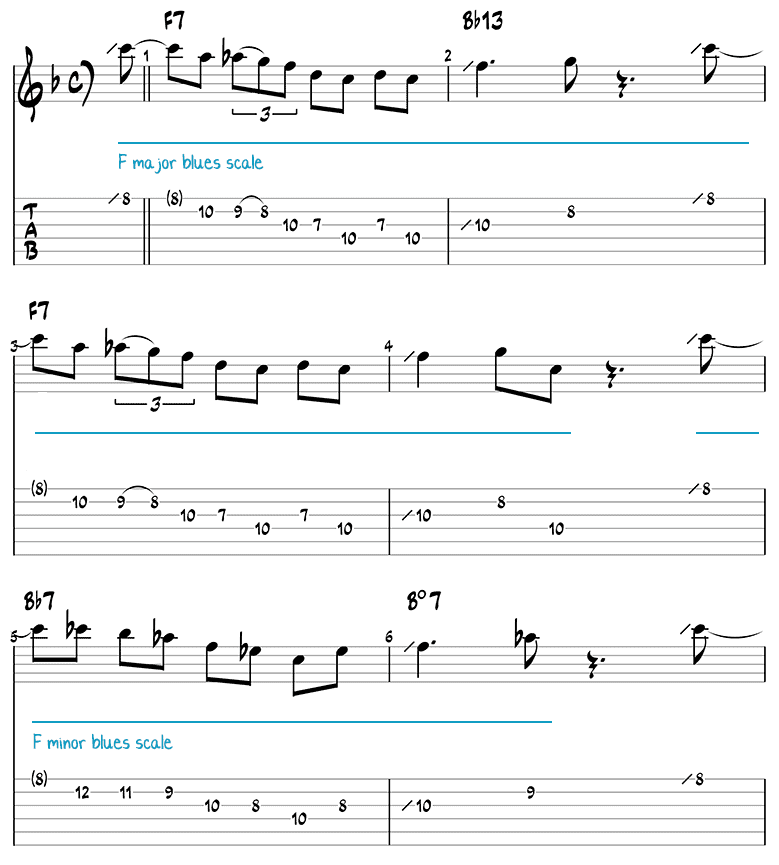
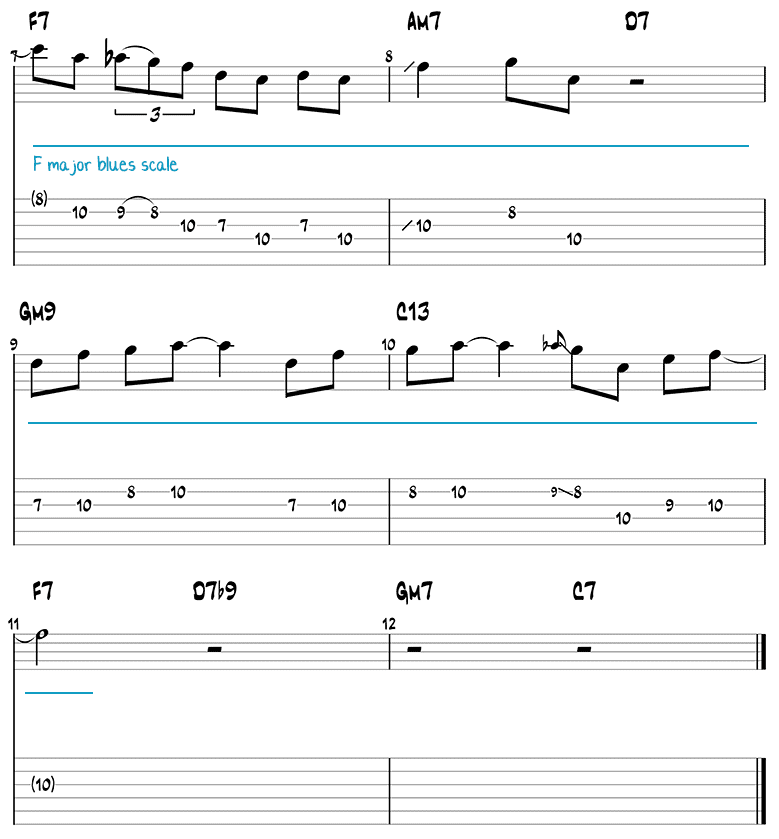
Jazz Guitar Pattern 2 – Chromatic Approach Notes (bar 5)
Chromatic approach notes are non-diatonic notes that are used to approach a target note, usually a chord tone. They are used to create tension in a phrase, which can then be resolved to a consonant note.
Here is an example of chromatic approach notes on a Bb7 arpeggio.
The encircled notes are the chord tones of Bb7 and the rest of the notes are chromatic approach notes.

Voice Leading (Bar 7 to 9)
Here, Charlie Parker uses voice leading in a clever way: the (encircled) top notes F – E – Eb – D form a descending F bebop scale.
Jazz Guitar Pattern 3 – Chromatic Enclosures (Bar 8)
Chromatic enclosures are a typical jazz technique in which a target note is encircled by its chromatic neighbors. This method adds tension and dissonance to the phrase while also creating a sense of forward motion.
There are many variations on the chromatic enclosure. The one we have a look at here starts with a half tone above the target note, goes down a minor third, and then up chromatically to the target note.
Below, you will see two examples:
- In the first example, the target note is the 3rd of C7. The enclosure starts a half tone above (F) the target note (E), goes down a third to D, and then chromatically up (D#) to the target note (E).
- In the second example, the target note is the 5th of Fmaj7. The enclosure starts a half tone above (Db) the target note (C), goes down a third to Bb, and then chromatically up (B) to the target note (C).

Here’s a lick over a ii V I in F major that uses these two enclosure examples and adds a few more:
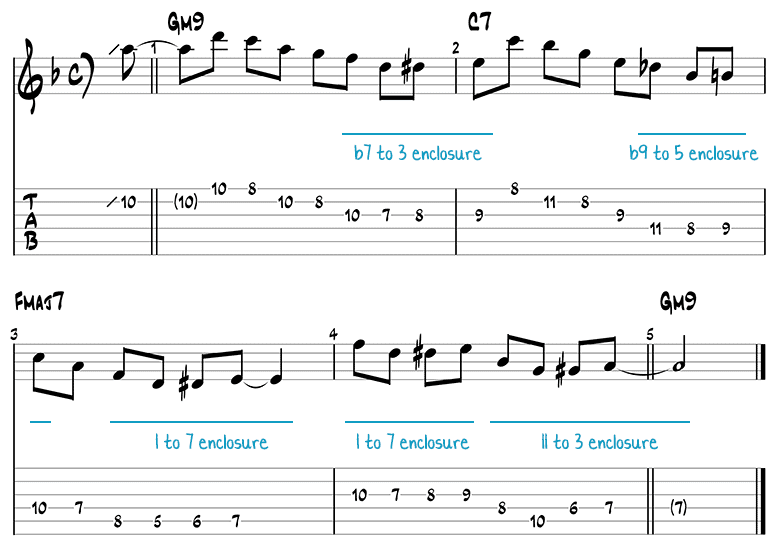
Related Lessons:
Billie’s Bounce Guitar Pro File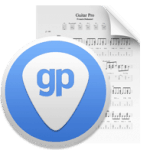
Billie’s Bounce Band in a Box File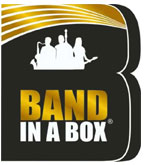

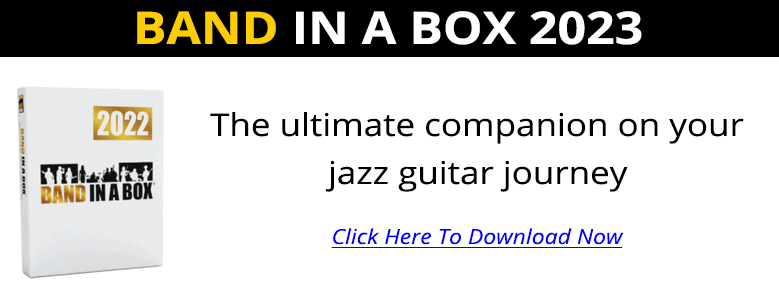

Thank you – it was especially useful to have a recording with the slurs performed on guitar, as it’s a bit hard to decode how that translates from the sax recordings I’ve heard. Nice fingering, too, and your example recording swings and is worth emulating. I appreciate it.
This is fantastic ! . Thanks you so much for doing this . Great website !
Fantastic lesson and a Great website! Thank you!!!
Derrick Bartley
Great stuff, really useful.
Thank you Dirk for this great lesson. Superb!
Very good lesson! Thanks a lot. I love this theme.
Excelente material.